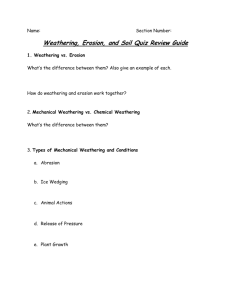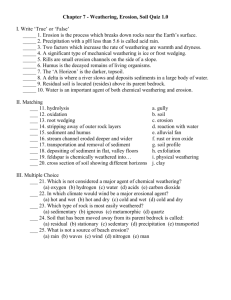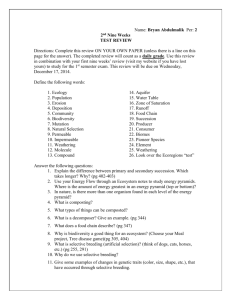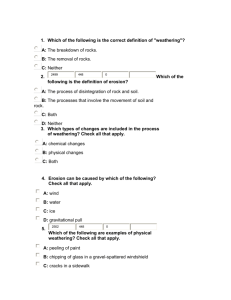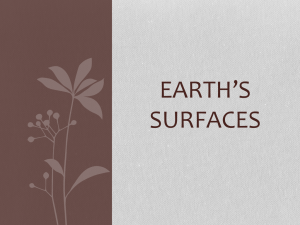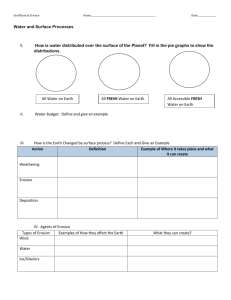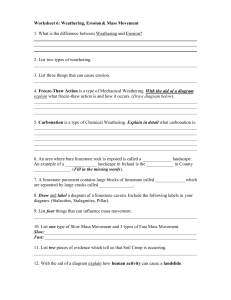Chapter 8 Review page 324
advertisement
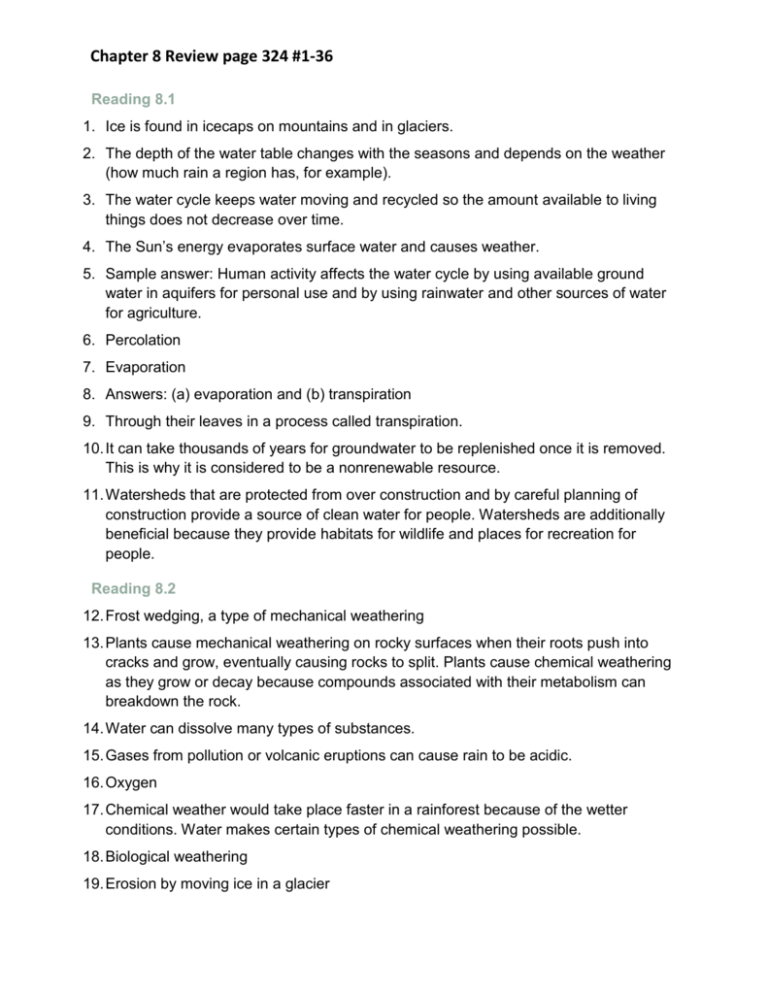
Chapter 8 Review page 324 #1-36 Reading 8.1 1. Ice is found in icecaps on mountains and in glaciers. 2. The depth of the water table changes with the seasons and depends on the weather (how much rain a region has, for example). 3. The water cycle keeps water moving and recycled so the amount available to living things does not decrease over time. 4. The Sun’s energy evaporates surface water and causes weather. 5. Sample answer: Human activity affects the water cycle by using available ground water in aquifers for personal use and by using rainwater and other sources of water for agriculture. 6. Percolation 7. Evaporation 8. Answers: (a) evaporation and (b) transpiration 9. Through their leaves in a process called transpiration. 10. It can take thousands of years for groundwater to be replenished once it is removed. This is why it is considered to be a nonrenewable resource. 11. Watersheds that are protected from over construction and by careful planning of construction provide a source of clean water for people. Watersheds are additionally beneficial because they provide habitats for wildlife and places for recreation for people. Reading 8.2 12. Frost wedging, a type of mechanical weathering 13. Plants cause mechanical weathering on rocky surfaces when their roots push into cracks and grow, eventually causing rocks to split. Plants cause chemical weathering as they grow or decay because compounds associated with their metabolism can breakdown the rock. 14. Water can dissolve many types of substances. 15. Gases from pollution or volcanic eruptions can cause rain to be acidic. 16. Oxygen 17. Chemical weather would take place faster in a rainforest because of the wetter conditions. Water makes certain types of chemical weathering possible. 18. Biological weathering 19. Erosion by moving ice in a glacier Chapter 8 Review page 324 #1-36 20. More sediment and larger pieces of sediment can be moved by water at higher speed and energy. 21. Wind 22. Gravity and water 23. The pattern is called graded bedding. The larger particles settle first and the smallest settle last. 24. Sample answer: Texas High Plains (the Texas Panhandle region): This ecoregion is flat and grassy, but it also has river-carved canyons and rivers. It experiences biological weathering due to the presence of bison and prairie dogs as well as grazing by ranch animals. This ecoregion also experiences erosion by weather patterns in the western section and erosion by rivers in the eastern section. Reading 8.3 25. The Sun and Earth’s internal heat 26. An updraft is made of warm air. 27. The bottom of the storm cloud is negative and the top is positive. 28. Lightning heats the air causing it to expand. A pressure wave is created that we hear as thunder. 29. Hail forms in tall thunderstorm clouds, where part of the cloud is below freezing and where water droplets freeze on contact with particles. 30. This would be a Category 2 hurricane. 31. All of these conditions are necessary. 32. A tornado is about three times smaller and is much faster than a hurricane. 33. A disadvantage is that flooding is common on a floodplain. However, the soil is very nutrient-rich and good for agriculture. 34. Flash floods are caused by heavy rains. The water cannot penetrate the ground fast enough and builds up creating a flood. 35. Protecting native plants would reduce the occurrence of dust storms because plants bind soil together with their roots and protect it from being blown away by wind. 36. Flooding replenishes the groundwater in the area and enriches the soil with nutrients.

